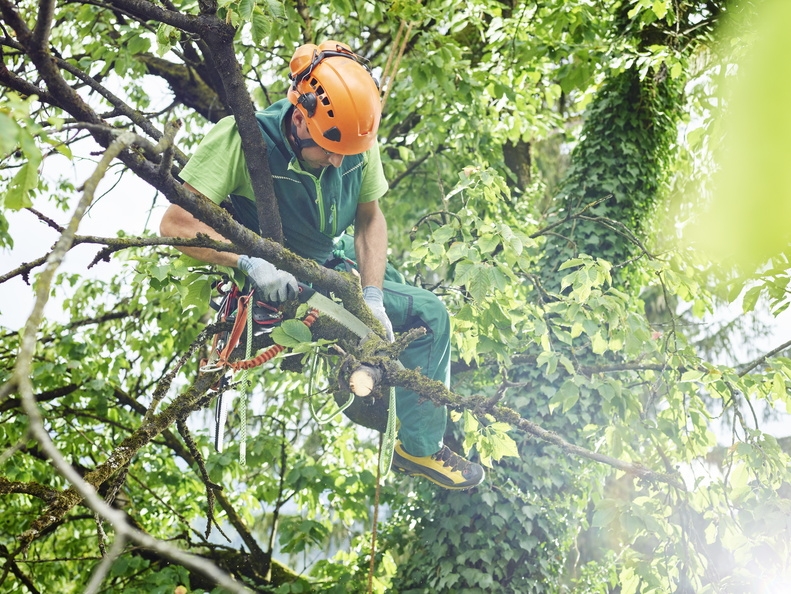Maintaining Healthy and Beautiful Trees: The Essential Role of Professional Tree Trimming Services in Landscape Care

Trees are not just a source of beauty and shade in our landscapes; they are living organisms that require care and maintenance to thrive. Tree trimming services, also known as pruning, is a crucial service that ensures trees remain healthy, safe, and aesthetically pleasing.
The Importance of Tree Trimming
Tree trimming is essential for several reasons, each contributing to the overall health and safety of trees and their surroundings.
-
Health of the Tree: Regular trimming helps remove dead or diseased branches, preventing the spread of decay. This promotes healthy growth and reduces the risk of disease infestations.
-
Safety: Overgrown branches can pose significant safety hazards. They may obstruct power lines, interfere with structures, or become potential dangers during storms. Trimming mitigates these risks, ensuring a safer environment.
-
Aesthetic Appeal: Well-maintained trees enhance the visual appeal of a landscape. Trimming shapes trees, providing a neat and tidy appearance that complements the overall design of a property.
-
Light and Air Circulation: Pruning improves air circulation and allows sunlight to penetrate through the tree's canopy. This is beneficial for the tree's health and the growth of under-story plants.
Techniques of Tree Trimming
Effective tree trimming involves a combination of techniques tailored to the specific needs of each tree. Here are some common methods used by professionals:
-
Crown Thinning: This technique involves selectively removing branches to reduce the density of the tree's crown. It allows more light and air to pass through, promoting healthy growth and reducing the risk of disease.
-
Crown Raising: In this method, lower branches are removed to raise the clearance of the tree's canopy. This is often done to provide space for pedestrians, vehicles, or structures beneath the tree.
-
Crown Reduction: This involves reducing the overall size of the tree's canopy. It is typically used when a tree has grown too large for its location and poses a risk to nearby structures or power lines.
-
Deadwooding: This technique focuses on removing dead, dying, or diseased branches. It is crucial for maintaining the tree's health and preventing potential hazards from falling branches.
-
Formative Pruning: This is carried out on young trees to establish a strong structure and desirable shape. Formative pruning sets the foundation for a healthy and well-shaped mature tree.
Benefits of Professional Tree Trimming Services
While some homeowners might attempt to trim their trees themselves, professional tree trimming services offer several advantages:
-
Expertise and Knowledge: Certified arborists have the knowledge and experience to assess the specific needs of each tree. They understand the biology of trees and the best practices for pruning to ensure optimal health and growth.
-
Safety: Tree trimming can be dangerous, especially when dealing with large trees or branches near power lines. Professionals are trained in safety protocols and have the necessary equipment to perform the job safely.
-
Proper Equipment: Professional tree trimmers have access to specialized equipment that allows them to reach high branches and perform precise cuts. This ensures that the trimming is done efficiently and effectively.
-
Preventing Damage: Improper trimming can cause long-term damage to a tree, affecting its health and stability. Professionals know how to make cuts that promote healing and prevent future issues.
-
Time and Convenience: Tree trimming can be time-consuming, especially for large properties with multiple trees. Hiring professionals saves time and ensures the job is done correctly, allowing homeowners to focus on other tasks.
Seasonal Considerations for Tree Trimming
The timing of tree trimming can significantly impact its effectiveness. Different tree species and climates may require specific pruning schedules. Here are some general guidelines:
-
Winter Trimming: Many deciduous trees are best pruned during their dormant season in winter. This reduces stress on the tree and minimizes the risk of disease transmission.
-
Spring and Summer Trimming: Pruning during the growing season can be done to manage growth and shape the tree. However, it should be done carefully to avoid excessive stress and potential damage.
-
Avoiding Fall Pruning: Pruning in the fall is generally discouraged as it can stimulate new growth that is vulnerable to winter damage.
Environmental and Long-Term Benefits
Tree trimming services not only enhance the immediate health and appearance of trees but also contribute to long-term environmental benefits:
-
Enhanced Tree Longevity: Regular trimming promotes the long-term health and longevity of trees, ensuring they continue to provide environmental benefits such as carbon sequestration and habitat for wildlife.
-
Improved Property Value: Well-maintained trees enhance the overall value of a property. A healthy and attractive landscape can significantly increase curb appeal and attract potential buyers.
-
Energy Efficiency: Properly trimmed trees can provide better shade in the summer and allow more sunlight in the winter, reducing energy costs for heating and cooling.
Tree trimming is a vital service that ensures the health, safety, and beauty of trees in our landscapes. By understanding the importance of trimming, the techniques involved, and the benefits it offers, property owners can make informed decisions about the care of their trees. While some tasks may be manageable for homeowners, professional tree trimming services provide the expertise, safety, and efficiency needed to maintain thriving and beautiful trees. Investing in regular tree trimming not only enhances the immediate environment but also contributes to the long-term health and sustainability of our urban and suburban landscapes.
- Industry
- Art
- Causes
- Crafts
- Dance
- Drinks
- Film
- Fitness
- Food
- الألعاب
- Gardening
- Health
- الرئيسية
- Literature
- Music
- Networking
- أخرى
- Party
- Religion
- Shopping
- Sports
- Theater
- Wellness
- News


